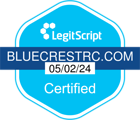Accessing addiction treatment is fraught with challenges that extend beyond the individual, encompassing societal stigma, financial barriers, and a lack of local resources. Addressing these obstacles is not merely a matter of policy reform; it requires a comprehensive understanding of the complex interplay between economic factors, cultural perceptions, and community awareness levels. To effectively dismantle these barriers, we must explore innovative strategies that can transform the setting of addiction treatment. What steps can be taken to cultivate a more inclusive and supportive environment for those seeking help?
Understanding Common Barriers
At the intersection of personal struggles and societal perceptions lies a complex web of barriers that individuals face when seeking addiction treatment. Barrier identification is vital in understanding these challenges, as it allows us to pinpoint the specific obstacles that hinder treatment accessibility.
Stigma remains one of the most pervasive barriers, often leading individuals to feel shame or fear of judgment, which can dissuade them from seeking help.
Moreover, misinformation about addiction and treatment options can create further hurdles. Many individuals are unaware of the various modalities available or the efficacy of these treatments, leading to feelings of hopelessness.
In addition, varying degrees of support from family and friends can either facilitate or hinder an individual’s journey toward recovery.
Cultural differences likewise play a role, as specific communities may prioritize alternative healing practices over conventional treatment options, complicating the decision-making process.
By addressing these barriers, we can cultivate an environment that promotes understanding, compassion, and greater treatment accessibility for those in need.
Understanding and dismantling these obstacles is fundamental for creating pathways to recovery and enhancing the overall efficacy of addiction treatment initiatives.
Financial Challenges
The journey toward addiction recovery is often significantly impeded by financial challenges, which can act as a formidable barrier for many individuals seeking treatment. High costs associated with rehabilitation programs, therapy sessions, and medication can deter individuals from pursuing the help they desperately need.
Addressing these financial obstacles is essential for improving access to effective treatment options.
Fortunately, various solutions exist to mitigate these challenges. Many treatment facilities offer scholarship programs to assist those who demonstrate financial need, providing a pathway for individuals to enter recovery without overwhelming expenses.
Furthermore, sliding-scale payment options allow clients to pay for services based on income, making treatment more affordable and accessible.
Individuals need to explore these resources and advocate for their right to treatment. By raising awareness about available financial assistance options, communities can help dismantle the barriers that prevent individuals from seeking the help they deserve.
Ultimately, addressing financial challenges through scholarship programs and sliding scale fees is a critical step toward ensuring that everyone can begin their recovery journey.
Insurance Limitations
Insurance limitations present a significant obstacle in accessing addiction treatment, often manifesting as coverage denials and restrictive policies.
Maneuvering through these complexities can be intimidating for individuals seeking help, leaving many unaware of potential financial assistance options.
Coverage Denials and Restrictions
Many individuals seeking addiction treatment encounter significant obstacles owing to coverage denials and restrictions imposed by insurance providers. These barriers often manifest through coverage disputes, where patients are at odds with their insurers over what constitutes medically necessary treatment.
Insurers may deny claims for critical recovery services, citing policy loopholes that exploit vague language and conditions only partially covered. This situation creates a distressing cycle in which individuals may delay necessary treatment because of financial concerns, ultimately jeopardizing their recovery journey.
Additionally, the emotional toll of managing these disputes can exacerbate feelings of hopelessness, leaving individuals feeling abandoned at their most vulnerable.
To combat these challenges, stakeholders, including policymakers and advocacy groups, must work towards more transparent and equitable insurance practices. By addressing the systemic issues surrounding coverage denials and advocating for comprehensive care, we can help more individuals access the addiction treatment they desperately need.
Ensuring that insurance policies are transparent and inclusive is not just a matter of policy reform; it is a matter of public health and human dignity.
Navigating Policy Complexities
Steering through the intricate terrain of addiction treatment policies can be overwhelming for individuals seeking help. Insurance limitations often create significant barriers, complicating access to necessary care. Many policies have restrictive criteria that dictate which treatments are covered, leaving patients uncertain and frustrated.
This complexity underscores the urgent need for policy reform and legislative advocacy to create more inclusive and comprehensive coverage options.
Navigating these policies requires not only awareness but also action. Individuals and their advocates must engage with lawmakers to push for changes, prioritizing patient needs over bureaucratic constraints. By promoting more transparent communication between insurers and treatment providers, we can guarantee that patients receive the care they need without facing undue financial burden.
Moreover, public awareness campaigns can play a critical role in illuminating the shortcomings of current policies and mobilizing communities to demand change. In this challenging environment, those affected by addiction must not feel isolated; instead, they should be empowered to advocate for their rights and contribute to a broader movement for effective policy reform.
Ultimately, a concerted effort can pave the way for a healthier future for all individuals battling addiction.
Financial Assistance Options
Maneuvering through the terrain of financial assistance options can be intimidating for individuals seeking addiction treatment, notably when faced with restrictive insurance limitations.
Many insurance plans impose caps on coverage or exclude specific treatment modalities, leaving individuals to explore alternative financial avenues.
Scholarship programs designed for addiction treatment can provide a lifeline to those in need.
These programs often aim to alleviate the financial burden by covering some treatment costs making recovery more accessible.
Eligibility criteria may vary, but many programs prioritize individuals demonstrating financial need, ensuring that help reaches those who require it most.
Additionally, many treatment facilities offer a sliding-scale payment option, allowing individuals to pay according to their income.
This flexible approach can be particularly beneficial for those encountering financial strain, enabling them to receive care without accumulating insurmountable debt.
Stigma and Shame
How can individuals seeking help for addiction overcome the formidable barriers of stigma and shame that often accompany their struggles? The pervasive stigma surrounding addiction can deter individuals from seeking the treatment they urgently need.
Developing shame resilience—an individual’s capacity to confront and navigate feelings of shame—becomes imperative to combat this. When individuals understand that their experiences are shared and that addiction is a complex, multifaceted issue, they can better resist the internalized shame that often keeps them silent.
Moreover, stigma reduction initiatives play an essential role in reshaping societal perceptions of addiction. Public awareness campaigns, educational programs, and advocacy efforts can dismantle harmful stereotypes, encouraging a more compassionate understanding of addiction as a health issue rather than a moral failing.
Engaging in open dialogues about addiction in community settings helps normalize the conversation, making it easier for individuals to seek help without fear of judgment.
Ultimately, overcoming stigma and shame is not just an individual journey; it requires collective action to create an environment where individuals feel safe and empowered to pursue recovery.
Limited Availability of Resources
Access to addiction treatment is often hindered by a troubling scarcity of resources, which can leave individuals feeling isolated and hopeless in their pursuit of recovery.
Limited resource allocation constrains the availability of support programs and stifles treatment innovation and outreach initiatives. A multifaceted approach is vital to effectively combat these challenges.
1. Community Partnerships: Collaborating with local organizations can improve resource sharing and extend the reach of support services.
2. Technology Integration: Utilizing digital platforms can streamline access to treatment options, making it easier for individuals to engage with available resources.
3. Workforce Development: Investing in training and education for healthcare providers is significant to guarantee a skilled workforce capable of delivering quality addiction treatment.
4. Holistic Approaches: Emphasizing prevention strategies and comprehensive care can address the root causes of addiction, thereby minimizing the demand for treatment resources.
Geographic Accessibility
Geographic accessibility poses significant challenges for individuals seeking addiction treatment, particularly in rural areas where resources are scarce.
Transportation limitations further exacerbate this issue, making it difficult for those in need to reach available services.
Addressing these obstacles is essential for ensuring that all individuals, regardless of location, have equitable access to the support they require for recovery.
Rural Area Challenges
Nearly 20% of the U.S. population resides in rural areas, yet these communities face significant challenges in accessing addiction treatment services. Geographic barriers, limited resources, and stigma can create a perfect storm, discouraging individuals from seeking help.
Innovative strategies, including the integration of telehealth services and strengthened community partnerships, must be employed to address these issues.
Critical challenges in rural addiction treatment access include:
1. Limited Treatment Facilities: Many rural areas lack specialized addiction treatment centers, forcing individuals to travel long distances for care.
2. Workforce Shortages: A scarcity of healthcare professionals trained in addiction treatment exacerbates the problem, leading to long wait times and limited availability of services.
3. Stigma: Social stigma surrounding addiction may prevent individuals from seeking help, as they fear judgment from their community.
4. Lack of Awareness: Many residents may need to be informed about available treatment options, including the benefits of telehealth services that provide remote support and consultations.
Transportation Limitations
Many individuals in rural areas find themselves grappling with transportation limitations that significantly hinder their ability to seek addiction treatment. The lack of accessible public transport solutions often creates a formidable barrier, forcing many to forgo necessary care.
The treatment journey can become an insurmountable challenge in regions where public transit is scarce or nonexistent, leaving individuals isolated and without support.
Innovative approaches, such as mobile treatment units, can play a vital role in combating these transportation challenges. These units are designed to bring care directly to underserved communities, providing fundamental services in familiar environments.
By reducing travel requirements, mobile treatment units facilitate access and promote a sense of community and trust, encouraging individuals to seek the help they need.
Investing in public transport solutions tailored for addiction treatment access is equally important. These solutions can include dedicated shuttle services or partnerships with local transportation providers to guarantee individuals can reach treatment centers without undue burden.
Cultural Competence in Treatment
Cultural competence in addiction treatment is increasingly recognized as a critical factor in promoting effective recovery outcomes. As addiction affects individuals from various backgrounds, treatment programs must be equipped to address their clients’ unique cultural needs. This can be achieved through comprehensive cultural sensitivity training and the implementation of diverse treatment approaches that resonate with different populations.
To improve cultural competence in addiction treatment, consider the following strategies:
1. Implement Ongoing Cultural Sensitivity Training: Regular training for staff guarantees they are aware of cultural differences and can respond appropriately to the needs of clients from various backgrounds.
2. Develop Diverse Treatment Approaches: Tailoring treatment plans to incorporate culturally relevant practices can significantly boost program engagement and retention.
3. Encourage Community Involvement: Involving community leaders and organizations can help bridge gaps between treatment facilities and the populations they serve.
4. Utilize Feedback Mechanisms: Regularly soliciting client feedback about their experiences can provide insights into how services can be improved to better align with cultural expectations.
Lack of Awareness and Education
Addressing the lack of awareness and education surrounding addiction treatment is essential for dismantling the barriers that hinder individuals from seeking help. Many individuals remain unaware of the various treatment options available, often viewing addiction through a lens of stigma and misconceptions. This lack of understanding can lead to shame and isolation, ultimately preventing those in need from accessing critical resources.
Education initiatives play a pivotal role in transforming public perceptions of addiction. By providing accurate information about the nature of addiction, its treatment, and recovery, we can empower individuals to seek help without fear of judgment. Awareness campaigns should strategically target diverse audiences, nurturing empathy and understanding. These campaigns can utilize various platforms, from social media to community events, ensuring the message resonates widely.
Furthermore, integrating addiction education into school curriculums can develop a more informed generation better equipped to address the challenges of addiction. When society understands that addiction is a treatable condition rather than a personal failure, the pathway to recovery becomes clearer for those struggling.
Building Support Networks
Building a robust support network is vital for individuals seeking addiction treatment, as community support can significantly improve recovery outcomes.
Engaging family members and utilizing peer resources nurtures a sense of belonging and provides essential emotional and practical assistance.
Importance of Community Support
Though individual motivation plays a crucial role in overcoming addiction, the presence of a strong community support network can significantly improve the chances of recovery. Community engagement cultivates relationships that are critical for individuals maneuvering the complexities of addiction.
Support groups, local initiatives, and peer mentorship create an environment where individuals can share experiences and resources, enhancing their recovery journey.
Key aspects of effective community support include:
1. Social Connections: Building relationships that provide emotional and practical support, enhancing feelings of belonging.
2. Resource Sharing: Encouraging collaboration among community members to facilitate access to treatment options and recovery resources.
3. Community Education: Informing the public about addiction and recovery, reducing stigma, and promoting understanding.
4. Outreach Programs: Actively reach out to individuals in need, ensuring they know available resources and support systems.
Through these collaborative efforts, communities can create a safety net for those struggling with addiction, emphasizing the importance of family involvement and engagement in the recovery process.
A robust support network empowers individuals to embrace recovery, transforming challenges into opportunities for growth.
Engaging Family Members
Engaging family members in the recovery process is a significant component that can dramatically improve the effectiveness of addiction treatment. Family dynamics play a pivotal role in shaping an individual’s experience with addiction and recovery. When family members are actively involved, they not only provide emotional support but also help to promote accountability and understanding.
Implementing effective communication strategies is fundamental in this engagement. Open dialogues about addiction and its impacts can dismantle stigma and promote empathy among family members. This approach encourages a supportive environment where individuals feel safe expressing their struggles and triumphs.
Moreover, educating family members about the nature of addiction cultivates a collective understanding of the challenges faced by the recovering individual. This shared knowledge can lead to improved interactions and stronger relationships, which are critical for sustained recovery.
Utilizing Peer Resources
The involvement of family members lays a strong foundation for recovery, but the journey to overcoming addiction can be further improved through the integration of peer resources.
Peer support offers unique advantages rooted in shared experiences, nurturing emotional resilience, and empowerment strategies vital for long-lasting recovery. By establishing robust support networks, individuals can more effectively navigate the complexities of addiction.
Here are four key components of utilizing peer resources in addiction recovery:
1. Recovery Groups: These gatherings provide a safe space for individuals to share their struggles, cultivating a sense of belonging and understanding.
2. Mentorship Programs: Pairing those in recovery with seasoned mentors improves interpersonal relationships and offers guidance based on lived experiences.
3. Peer-Led Initiatives: Programs driven by peers emphasize holistic healing and create an environment where individuals feel empowered to take charge of their recovery journey.
4. Community Outreach: Engaging with local resources helps build connections and promotes awareness, further strengthening the recovery community.
Advocacy for Policy Change
Numerous studies highlight the critical need for systemic reform in addiction treatment policies, as current frameworks often hinder access to crucial services. Advocacy for policy change is pivotal in dismantling these barriers, necessitating a multifaceted approach that includes legislative advocacy and community engagement.
By promoting public awareness of addiction as a health crisis rather than a moral failing, we can galvanize support for comprehensive policy reform. Effective advocacy requires robust stakeholder collaboration, ensuring that individuals affected by addiction have a voice in shaping legislation.
Grassroots organizing is fundamental; it empowers communities to mobilize and advocate for health equity, making addiction treatment accessible for all demographics. Policy analysis is a foundation for understanding existing gaps and informing targeted reforms.
Furthermore, advocacy training equips individuals and organizations with the necessary skills to influence decision-makers. Building strategic partnerships with healthcare providers, policymakers, and community organizations amplifies the impact of advocacy efforts.
Collectively, these initiatives can drive meaningful change in addiction treatment policies, ultimately improving outcomes for those in need and cultivating a more equitable healthcare system.
Frequently Asked Questions
What Signs Indicate Someone Needs Addiction Treatment?
Warning signs of needing addiction treatment include noticeable behavioral changes, physical symptoms, emotional distress, social withdrawal, relationship issues, compulsive behavior, and secrecy patterns. Recognizing these indicators is essential for timely intervention and support.
How Can I Find Support Groups Near Me?
To find local support groups, consider exploring online directories, community health centers, or organizations dedicated to addiction recovery. These resources can provide valuable connections and nurture a supportive environment crucial for individuals seeking assistance and recovery.
Are There Online Resources for Addiction Education?
Numerous online resources offer addiction education, including comprehensive online courses and virtual support groups. These platforms provide accessible information and community engagement, empowering individuals to understand addiction better and improve their recovery journey.
What Should I Expect During My First Treatment Session?
During your first session, expect an open dialogue focused on establishing treatment goals, evaluating your needs, and building rapport with your provider. This foundational meeting is essential for tailoring a personalized treatment plan moving forward.
How Can Family Members Support Someone in Treatment?
Family members can offer essential support through emotional encouragement, practical assistance, effective communication strategies, and crisis intervention. Furthermore, setting boundaries and utilizing educational resources can improve understanding and promote a healthier environment conducive to recovery.
Final Thoughts
Addressing the barriers to addiction treatment is crucial for cultivating an inclusive and effective recovery environment. By tackling financial challenges, combatting stigma, and enhancing resource availability, a supportive infrastructure can be established for individuals seeking help. Furthermore, promoting cultural competence and increasing awareness through education will empower communities and individuals. A concerted effort towards advocacy for policy change will further guarantee equitable access to treatment, ultimately enabling a more compassionate approach to addiction recovery.
If you or a loved one is struggling with addiction, remember that you don’t have to navigate this journey alone. At BlueCrest Recovery, we’re here to provide the support and resources needed to help you move from a place of powerlessness to one of strength and healing. Don’t hesitate to reach out to our team online or call us today. Let us walk with you on your journey to recovery. Follow us on Facebook for ongoing insights, encouragement, and support.


















